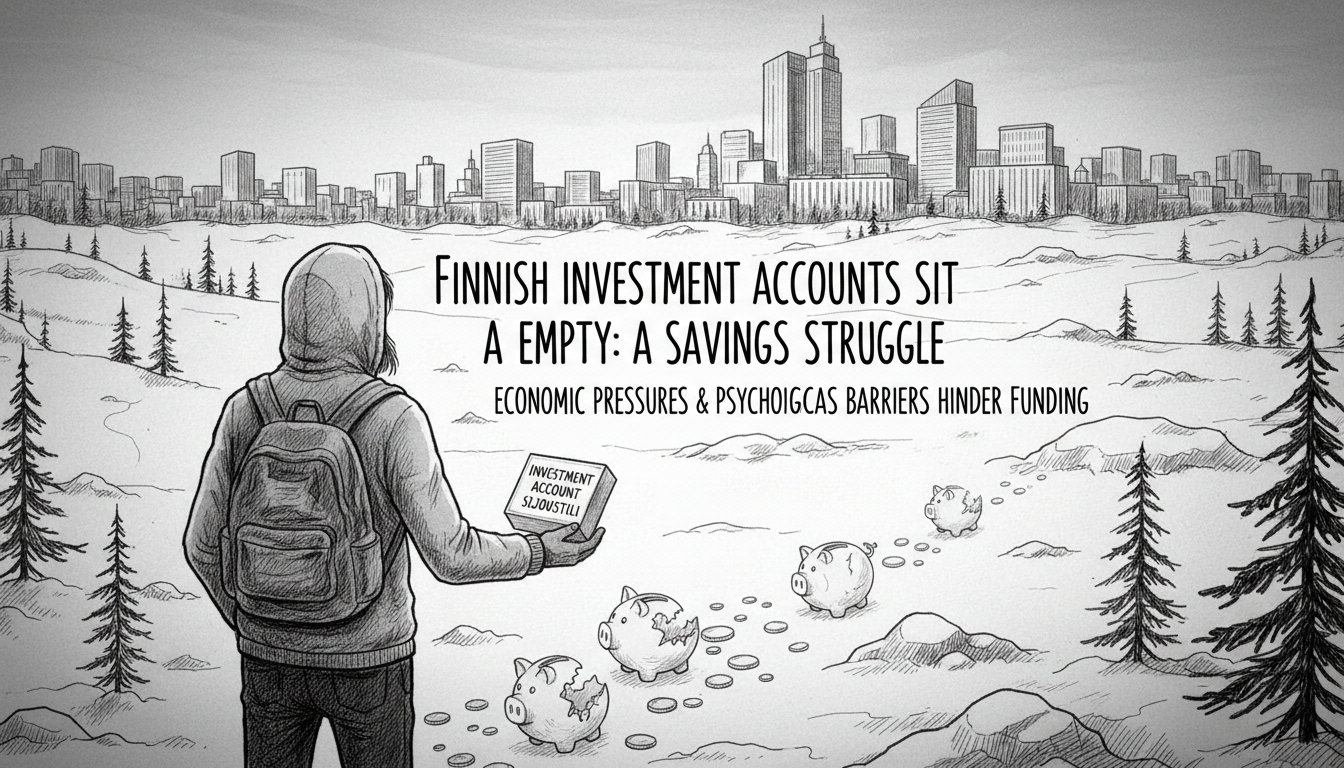Finnish households are opening investment accounts at record rates but leaving them empty. New research shows one in five Finns has established an equity savings account, yet a quarter of these accounts contain no funds.
Danske Bank's latest savings study reveals concerning patterns in Finnish investment behavior. The median amount in Finnish equity savings accounts has dropped dramatically from 4,643 euros to just 2,613 euros over the past four years. This decline reflects broader economic pressures facing Nordic households.
Money shortage remains the primary reason for empty accounts, cited by 29 percent of respondents. Yet this factor has lost considerable ground since earlier surveys when 59 percent identified financial constraints as the main barrier.
New obstacles have emerged with equal force. Procrastination now affects 26 percent of account holders, while perceived difficulty of stock market investing deters 23 percent. Another 14 percent avoid using their accounts because they cannot invest in funds through this vehicle.
Financial experts see this as symptomatic of Finland's current economic climate. Households face squeezed budgets amid rising living costs and interest rates. Many families prioritize daily expenses over long-term wealth building.
Danske Bank's private sector economist Kaisa Kivipelto noted the challenging environment. She said in a statement that recent economic conditions have limited Finnish savings opportunities. Many households have directed their money toward basic living expenses and increased interest payments.
There are positive signs on the horizon. Purchasing power shows gradual improvement, and unemployment rates are projected to decline in the coming year. These developments could create more favorable conditions for Finnish savings and investment.
The research suggests automated investing solutions could help overcome psychological barriers. Regular, automatic transfers to investment accounts might address both procrastination and perceived complexity concerns.
This situation reflects a broader Nordic pattern where traditional savings culture meets modern investment opportunities. Finns maintain strong savings habits but struggle to transition from traditional bank accounts to equity markets. The gap between account ownership and active investing highlights the need for better financial education and more accessible investment tools.
International readers should understand that Finland's equity savings accounts offer tax advantages similar to other Nordic investment vehicles. The empty account phenomenon represents missed opportunities for wealth building through these tax-efficient channels.
The trend has implications for Finland's long-term economic health. Widespread passive account ownership could affect capital market participation and household wealth accumulation. Financial institutions may need to develop simpler onboarding processes to convert account openings into active investing.
What happens next depends on economic recovery and financial education efforts. If purchasing power continues improving, more Finns might fund their empty accounts. Financial institutions could also play a role by developing automated investment solutions that address the procrastination and complexity barriers identified in the research.

